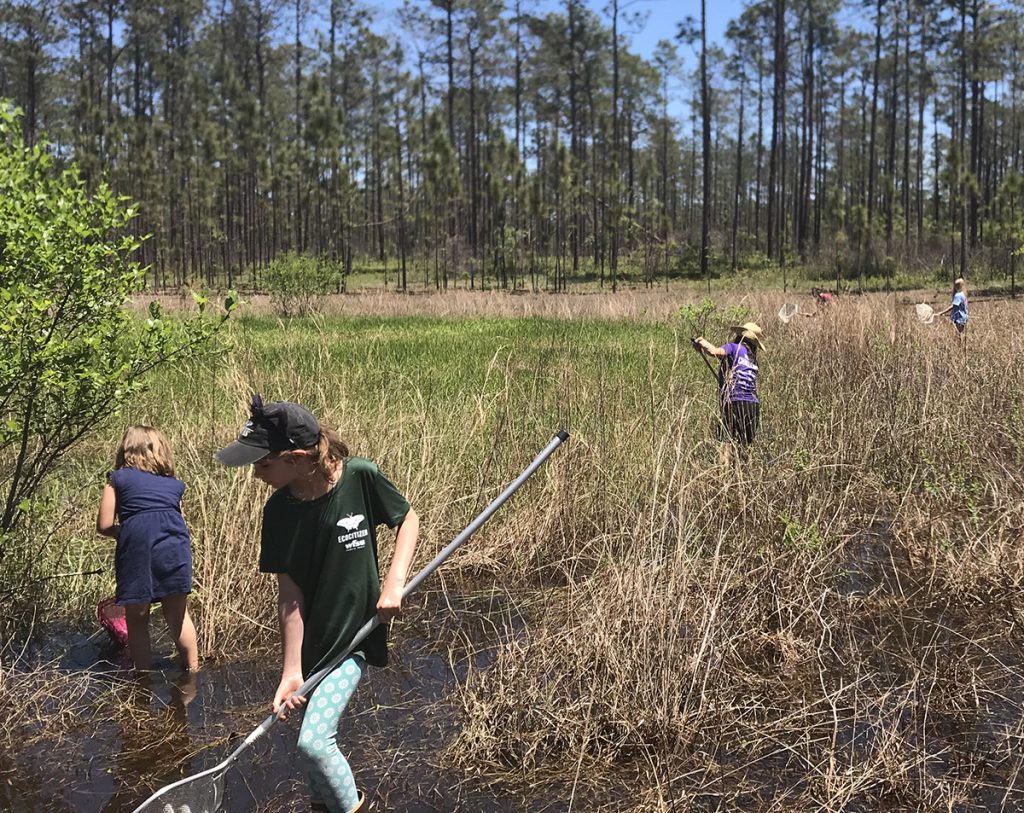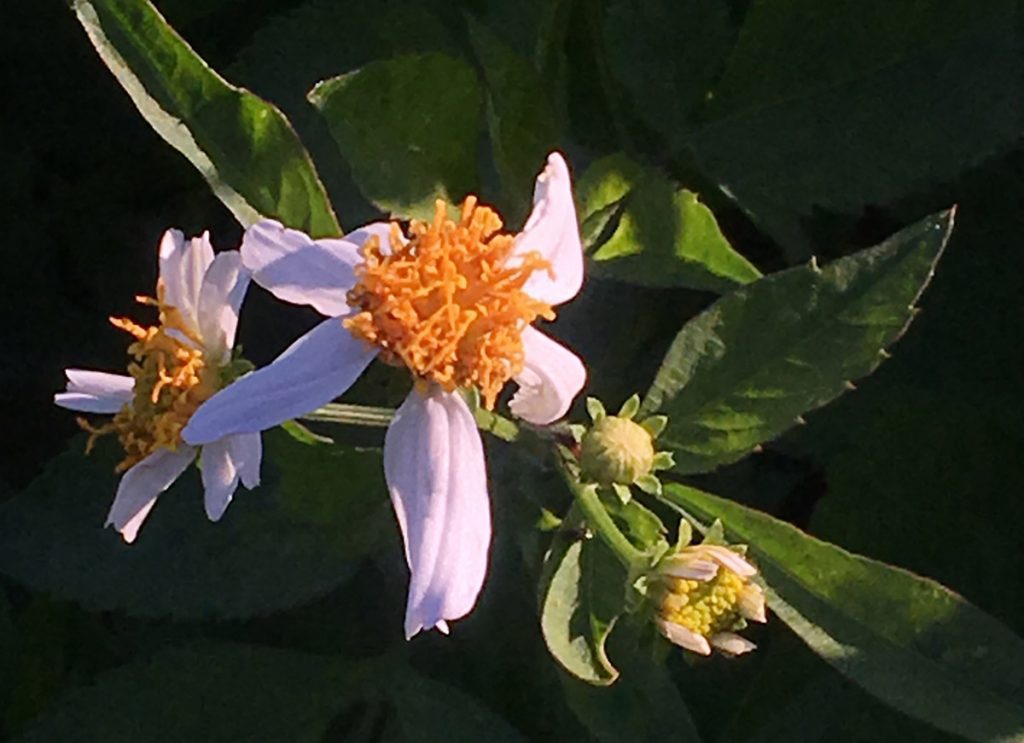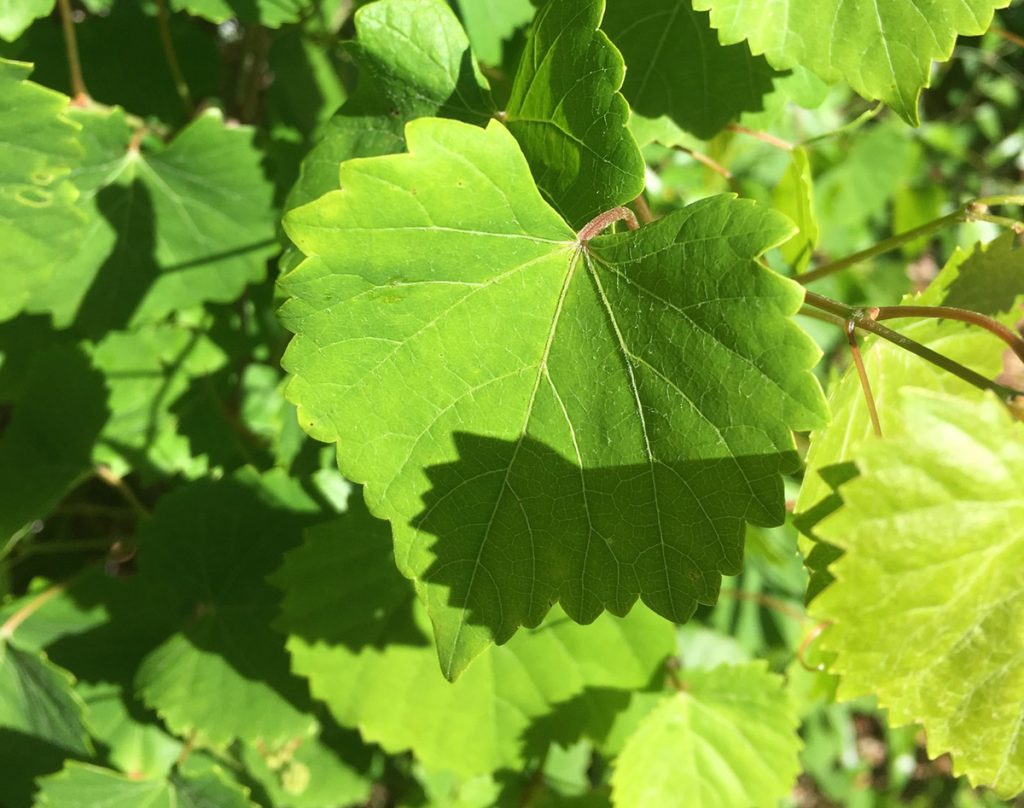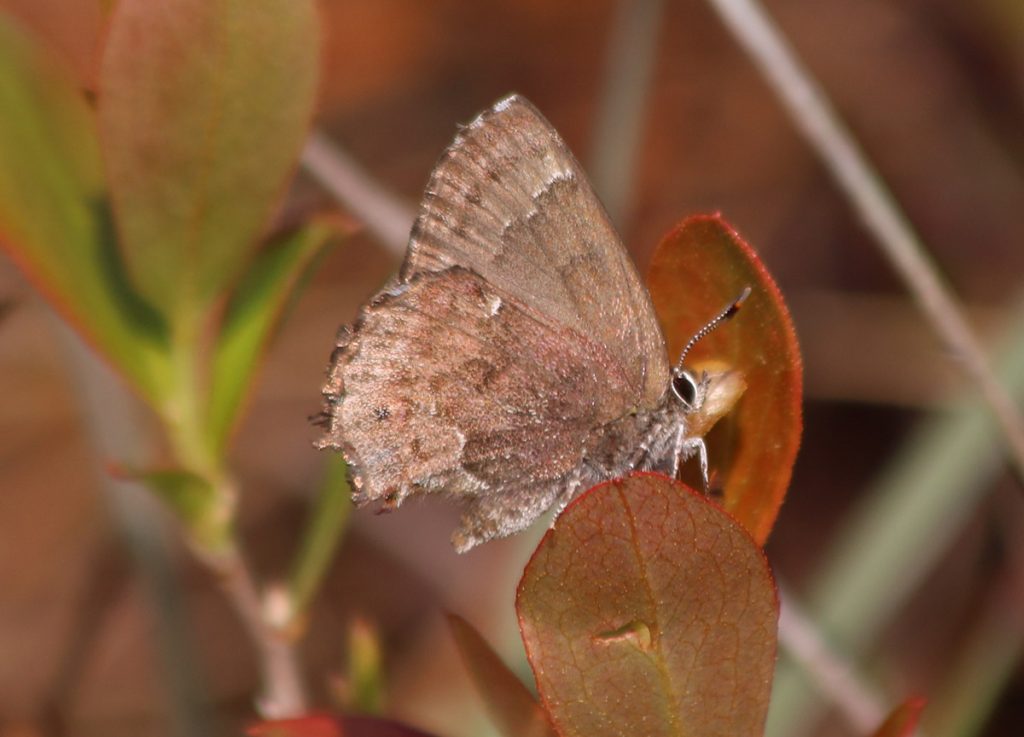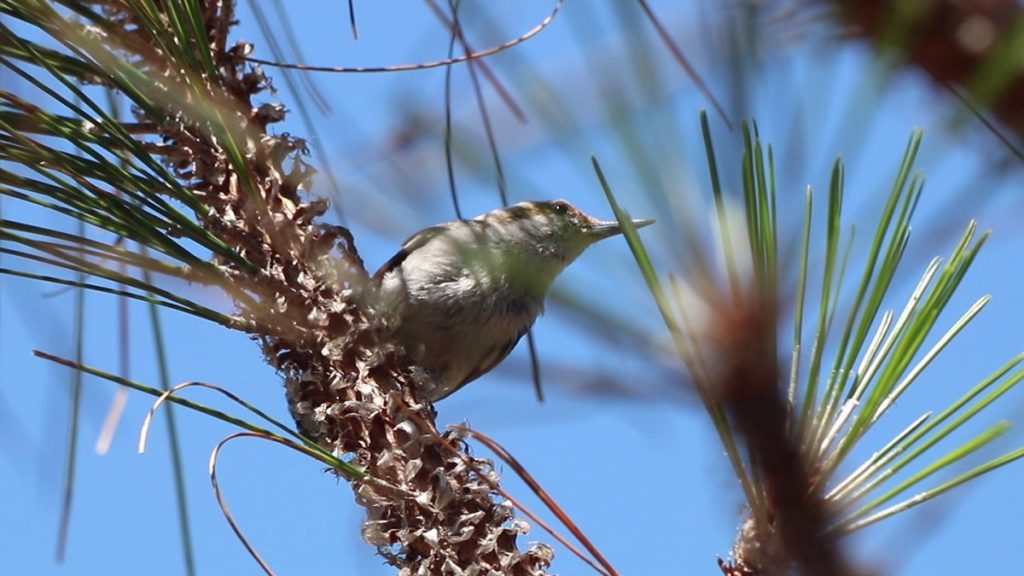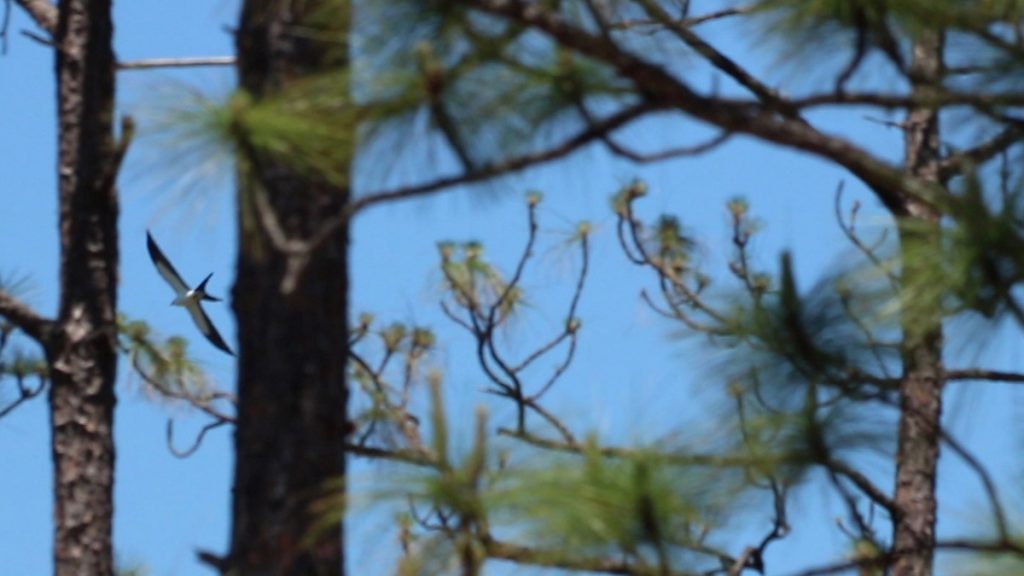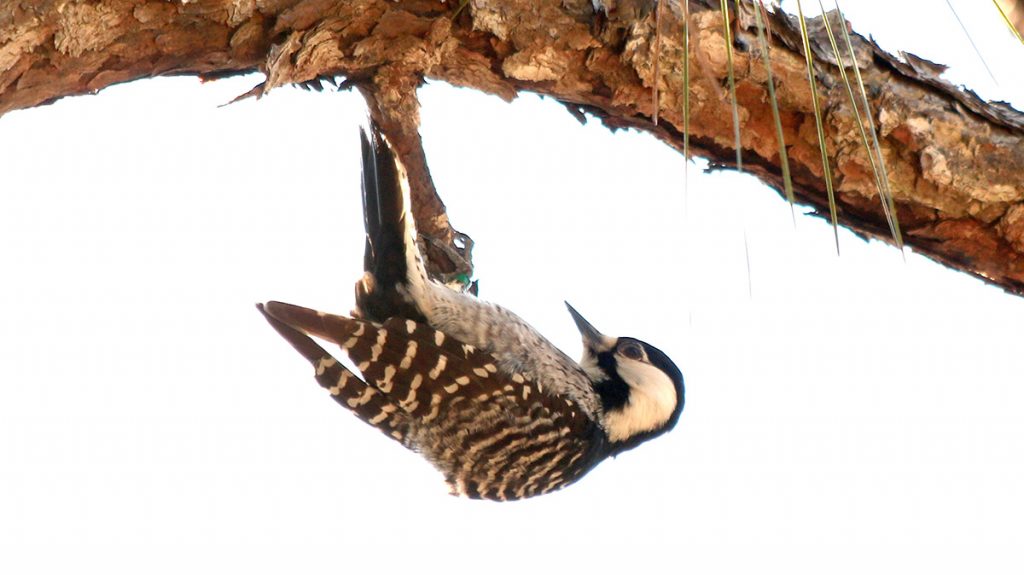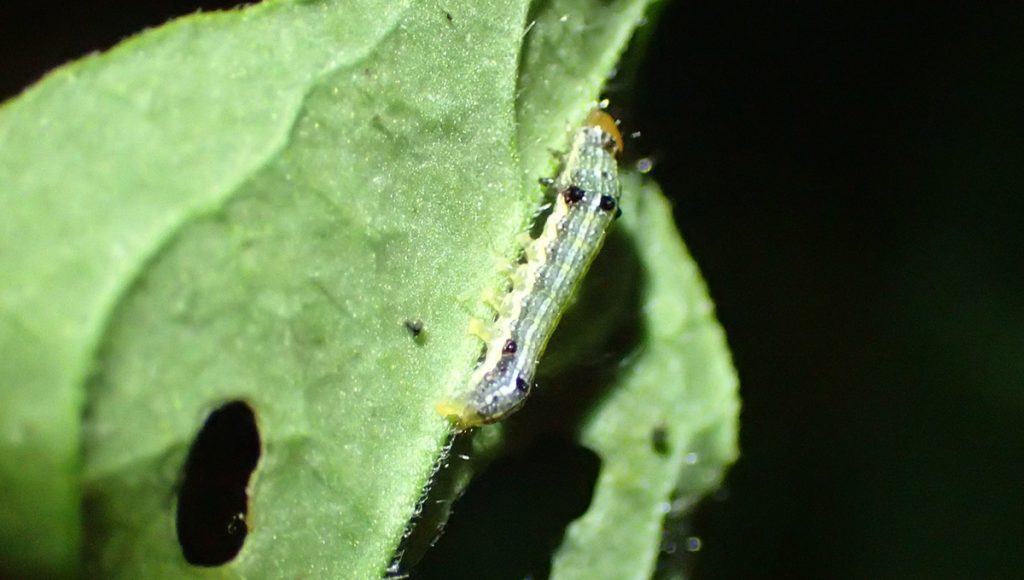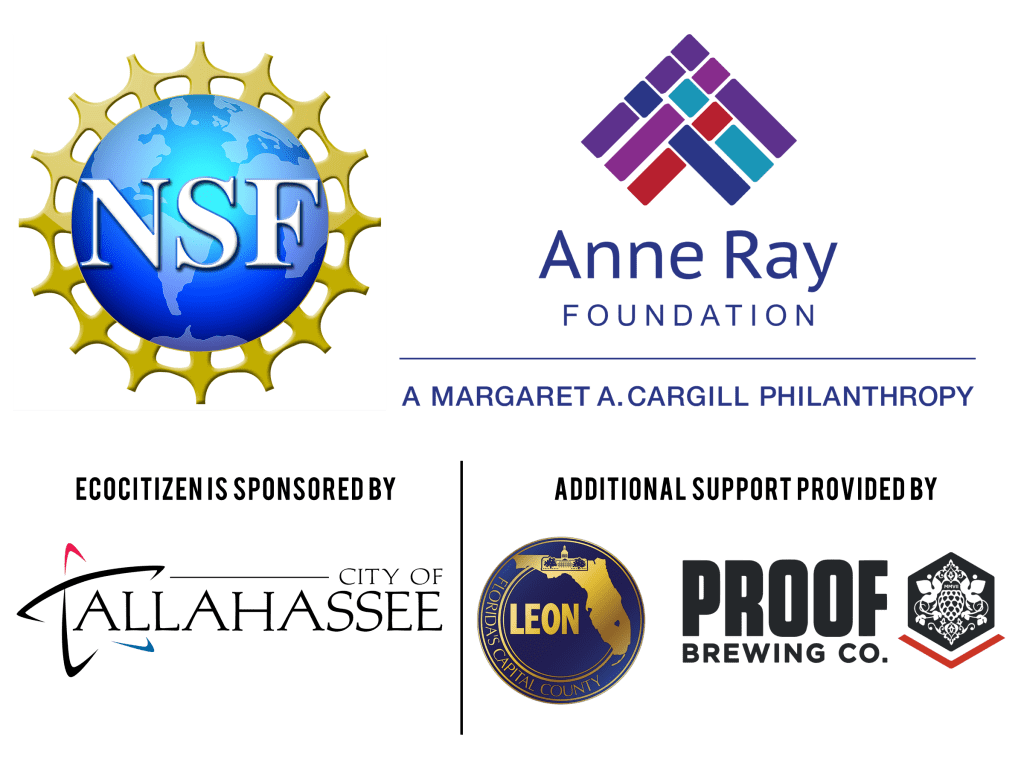The City Nature Challenge is over. Did we do justice to the biodiversity of our region?
Subscribe to the WFSU Ecology Blog to receive more videos and articles about our local, natural areas, and subscribe to the WFSU Ecology Youtube Channel.
Rob Diaz de Villegas WFSU Public Media
The observations have all been uploaded, and the identification process is done. The 2019 City Nature Challenge is in the books! And so now that the data has been curated, we can take a look at what the Challenge told us about wildlife in Tallahassee/ Leon County.
But first, let’s recap the Challenge. Between April 26 and 29, 170 cities across the world competed to see who could make the most observations on iNaturalist. Other categories include number of species observed, and number of observers. On the one hand, we’re competing as a city- how many of us humans got out and how many observations did we make? On the other hand, we’re showing off our biodiversity. It’s all well and good for all of us to observe every Bidens pilosa plant (our most common observation) we see. But our area is a stronghold for animals that are rare in other parts of their historic range.
And we want to show off how well we could find these birds, butterflies, and salamanders.
Locally, the Florida Fish and Wildlife Conservation Commission coordinated the Challenge. They organized a series of outings at locations across the county, from Elinor Klapp-Phipps Park in the north to L. Kirk Edwards WEA in the east, and at points in between. We partnered with FWC for a larger scale event- EcoCitizen Day, where we bussed people to the Apalachicola National Forest to make observations and dipnet ephemeral wetlands with the Coastal Plains Institute. And right down the road from EcoCitizen headquarters, Apalachee Audubon guided people around Lake Elberta.
The Challenge was a central focus of our EcoCitizen Project. Not only did we produce videos and write blog posts about using iNaturalist, we also encouraged people to garden for wildlife. That way, you could make observations from your own yard. And hey, you’re helping birds and butterflies as well.
That’s the point of EcoCitizen, and the City Nature Challenge. Of course we want to win. More importantly, though, we want people to take notice of the life around them, and to integrate it into the way they live their everyday lives.

Long-headed Toothpick Grasshopper (Achurum carinatum), found in the Munson Sandhills during the City Nature Challenge.
City Nature Challenge | By the Numbers
Having said that, if we’re going to compete, we do want to win! Unfortunately, competing against so many large cities, we didn’t make the most observations. But we did have a good showing.
Here’s how we placed out of 170 cities:
Observations: 26th. We made 11,269 observations. During the Challenge, iNaturalist users made 913,186 observations worldwide.
Species: 20th. We identified 1,701 species (31,820 worldwide)
Observers: 32nd. We had 411 observers (32,724 worldwide)
Cape Town, South Africa made the most observations. They have a metro population of over three million. Most of the cities ahead of Tallahassee had significantly larger populations, with one exception. That would be Tena, a small Ecuadorian town in the Andes, at a headwaters of the Amazon. Although they have a small population- around 30,000- their Challenge effort was coordinated by universities outside of the city, including one in Quito (which has a population of over one million).
At just under 200,000 people, and with no nearby major metropolis to help us, I think we did well. In fact, we ranked first among cities with populations between 100,000 – 250,000! This information isn’t on the iNaturalist page, but was shared with Peter Kleinhenz, who spearheaded the FWC City Nature Challenge Effort, by the event organizers.
And while the infographic on the event page only listed the top three in each category for per capita participation (the most observations, species, and observers adjusted for size of city), we ranked in the top ten in each category:
Observations per capita: 6th
Species per capita: 5th
Observers per capita: 4th
In other words, we rocked this thing in our first year of participating!
View the 2019 City Nature Challenge leaderboard.
Leon County | Species Breakdown
The City Nature Challenge was an opportunity to take a good look at our natural surroundings. We had a large group of motivated naturalists- both professionals and amateurs like me- trying to document as much as they could see. And there were plenty of field trips to places where wildlife thrives, bringing people to rare and endangered plants and animals.
Before we get to the rare and the cool, let’s look at the common. What are the plants and animals we encounter most often?
Bidens pilosa (aka Bidens alba) – 122 observations
This plant has been featured in a couple of our EcoCitizen videos. We saw it at Lake Elberta, where Native Nurseries general manager Lilly Anderson-Messec called it one of the most important plants for honey bees in the southeast. And this “weed” was also in our FAMU Bioblitz segment, alongside many invasive species.
This is a native plant that thrives in disturbed environments, and blooms pretty much year round. That makes it a valuable plant in an urbanized setting, where exotic plants choke out less hardy natives. I made four observations of Bidens pilosa, all near paved surfaces. In my four trips to the Apalachicola National Forest during the Challenge, I didn’t see any.
A note on the name. iNaturalist doesn’t list Bidens alba as a species, though many of us know this plant by that name. It uses the names pilosa and alba interchangeably.
Virginia Creeper (Parthenocissus quinquefolia) – 85 observations
Maybe you’ve taken this off your fence before? This member of the grape family loves disturbed areas as well.
American sweetgum (Liquidambar styraciflua) – 79 observations
Muscadine (Vitis routndifolia) – 74 observations
This member of the grape family produces edible grapes. Once you learn the shape of the leaf, you’ll notice that it’s everywhere. In the late summer, you can start finding edible fruit, though it helps to know how to eat them.
Green Anole (Anolis carolinensis) – 72 observations
This is the most common native lizard in our area. Invasive brown anoles have pushed the green out of many places within its range. But we only observed 27 brown anoles during the challenge to 72 for the green. Not bad.
Other common observations include live oak, southern magnolia, geese, poison ivy, and so on. There are plenty of plants and animals that we seem to see almost everywhere.
But what about the things we don’t see as often, or only see if we just happen to know where to go to find them?
The Rare, Endangered, and other Interesting Species of the City Nature Challenge
Butterflies
Frosted Elfin (Callophrys irus) – 1 observation
We learned about this butterfly a few weeks ago, when Dean and Sally Jue led us out into the Munson Sandhills region of the Apalachicola National Forest. This is one of those animals that has disappeared from much of its range, but has a strong population in our forest. As we learned in the recent video, the Challenge started past the time where we might see the elfin fly. This observation is of a caterpillar. Soon, it will make a chrysalis and lie in the ground until February.

Golden-banded skipper sunning on a leaf at Elinor Klapp-Phipps Park. This photo was taken in 2015 on a shoot with Dean and Sally Jue.
Golden Banded-skipper (Autochton cellus)- 17 observations
Seventeen observations for a species of butterfly that is so rare east of the Mississippi!
There are two reasons for such a high number here in Tallahassee. One is that, as we’ve covered before, Elinor Klapp-Phipps Park is a golden banded-skipper preserve. Its larval food, the thicket bean, is protected within the park, and so we have a strong population here in town.
The second reason for the high number of observations is that Dean and Sally Jue led a trip here during the challenge. If you’re going to go butterfly watching with anyone here in the Red Hills region, you want to go with them. It’s the reason they’re in the two videos I just linked, and hopefully many more throughout the years.
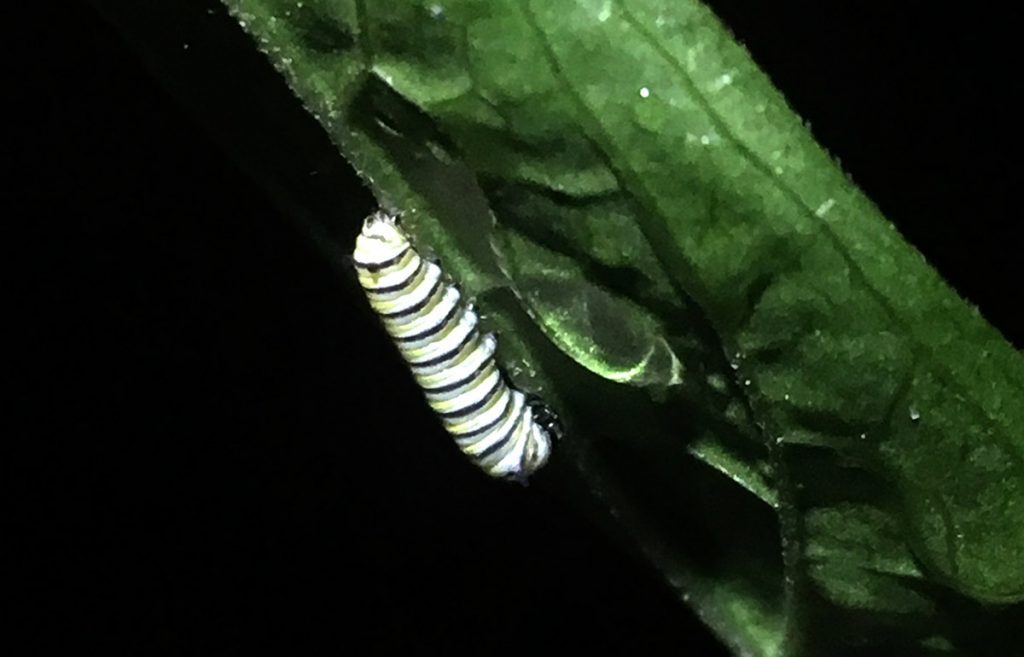
Second instar monarch caterpillar, observed just before sunrise on the first day of the City Nature Challenge.
Monarch butterfly (Danaus plexippus) – 14 observations
This was actually my first observation of the Challenge. Right now, monarchs are starting to come through our area in full force. I feel like I’ve seen a lot more in the days following the challenge- in my yard carpet bombing my milkweed with eggs, flying over my car while I’m driving, in parks. But the migration has been moving through Tallahassee for the last several weeks, and this is reflected in the observations. We saw caterpillars, like in my yard, as well as adults and chrysalides.
That shows that many of us have planted milkweed. A big part of the EcoCitizen Project is planting for wildlife, and that means larval food for butterflies. Check out our recent post on raising different butterfly species in our area.
Birds
Birds can be difficult to photograph with any camera, let alone a cell phone. So we don’t see a lot of rare sparrows or tiny hummingbirds in our CNC observations. We see a lot of wading birds and raptors here, but some small guys as well:
Brown-headed Nuthatch (Sitta pusilla) -2 observations
This isn’t a rare bird, but it is endemic to the longleaf pine ecosystem. And while we are surrounded by it in Tallahassee, longleaf habitats occupy only a small fraction of their original range. Also, this bird is small. Both observations came on EcoCitizen Day, right next to the site where the Coastal Plains Institute hosted dozens of intrepid iNaturalizers.
I made one of the observations, guided by Tall Timbers Research Station ornithologist Rob Meyer. He shared a lot of information we’ll see in the upcoming EcoCitizen documentary.
Swallow-tailed Kite (Elanoides forficatus) – 7 observations
This raptor is currently migrating through the area. I observed this right where I saw the nuthatches, at one of CPI’s striped newt ponds. The US Fish and Wildlife Service states that “the swallow-tailed is one of the most threatened land birds currently without federal protection.”
I didn’t get a great photo of the bird. As we walked up to the wetland, it swooped over the water and then off into the distance before my camera was on. Lesson learned- when visiting the Munson Sandhills, turn on the camera when you’re still in the car.
Wood Storks (Mycteria americana) – 6 observations
It would have been great to see them at Lake Elberta on EcoCitizen Day, but those birds seem to have moved on for now. As I reported in a recent segment on birding at Lake Elberta, the bird is observed there year round except during May and June. During these months, wood storks fly to their cypress swamp rookeries to nest.
Luckily, I made a last minute decision to make some City Nature Challenge observations at Lake Henrietta. There, I saw seven or eight, including a couple of younger storks.
Red-cockaded Woodpecker (Dryobates borealis) – 5 observations
All of these observations were made in the forests south of town. Rob Meyer heard them calling at the striped newt pond, but they never came within camera range.
The Apalachicola National Forest has the largest population of RCWs- another species endemic to longleaf ecosystems- on public land. The largest population on private lands is in the Red Hills region. North of town, several dozen hunting plantations manage their longleaf forests with fire. They do this to benefit a game bird- bobwhite quail– but RCWs and other longleaf endemics benefit as well.
Amphibians
Gopher frogs (Lithobates capito) – 2 observations
This is a species of concern in Florida, as its numbers are dwindling. Of the two observations, only one is research grade. Both photos are of tadpoles, and one looks more like a barking tree frog to me. I tagged Rebecca Means of the Coastal Plains Institute in that observation, to see if she could clarify. That’s part of the iNaturalist process. Sometimes it takes a while for the right person to see an observation and identify it. And sometimes there’s (typically friendly) debate, which can be educational for a lay person.
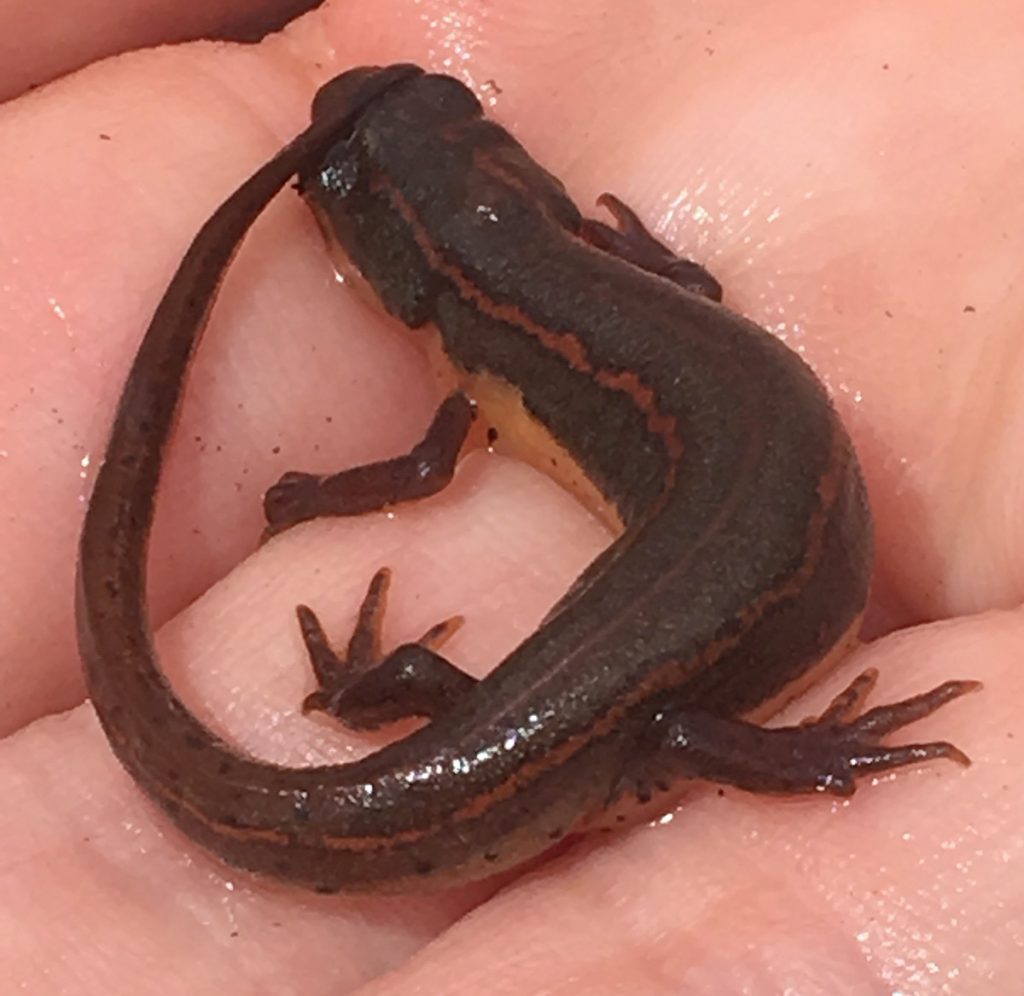
Striped Newt (Notophthalmus perstriatus), found leaving an ephemeral wetland in the Apalachicola National Forest.
Striped Newt (Notophthalmus perstriatus) – 3 observations
Maybe this one’s not fair. These newts had all but disappeared from the Munson Sandhills, which is why the Coastal Plains Institute started releasing them into ephemeral wetlands here. The newts observed were all captured in drift fence traps months after being released. This means, of course, that they survived in the pond, metamorphosed to breath air, and are now entering the upland forest. In other words, they’re wild animals.
Rebecca Means observed two of the newts while checking traps. I made the third observation. I was on my way to the forest to drop off her EcoCitizen t-shirts when Rebecca texted, asking if I wanted her to keep a newt she trapped for me to observe. What could I say? It may be the rarest animal I’ve observed on iNaturalist.
Tiger Salamander (Ambystoma tigrinum) – 1 observation
Other cool observations
3. Bobcat skull: Living bobcats are difficult to find and photograph. But iNaturalist identifies skulls and shells as well. That’s how I got a gopher tortoise ID in.
2. North American Least Shrew: One of North America’s smallest mammals at around three inches, this isn’t an easy one to spot.
1. Rat Snake eating what looks to be a squirrel. Cool moment to capture, and a snake in the middle of a meal is less likely to slither away when you walk towards it with a camera.
iNaturalist and the Backyard EcoSystem
I really wanted us to win the City Nature Challenge, and it gave me an excuse to go on a few nature outings and take photos of wildlife. That’s my idea of fun. I ended up with 204 observations over the four days of the Challenge, going to the Munson Sandhills every day, and making visits to Lake Henrietta, Lake Elberta, Cascades Park, and Chapman Pond in Myers Park. And yet 45 of my observations – over 20% – came from right in my yard.
I don’t have a huge yard. In fact, a lot of it is paved. But that shows you the power of merely looking. Ten minutes to midnight on the last day of the challenge, I put on a headlamp and made seven last-minute observations. Two different caterpillars were eating my pepper and eggplant leaves. I took another slug off of my milkweed. I decided to photograph a leaf infested with a citrus leafminer, which iNaturalist immediately recognized. A magnolia jumping spider and an alfafa weevil hid under cherry laurel leaves. And I kicked over some leaves for one last find- in this case, a common earthworm.
Seven species in just a few minutes, at night, in my yard.
And now the City Nature Challenge is over. But I’m still observing, and I hope you are, too.
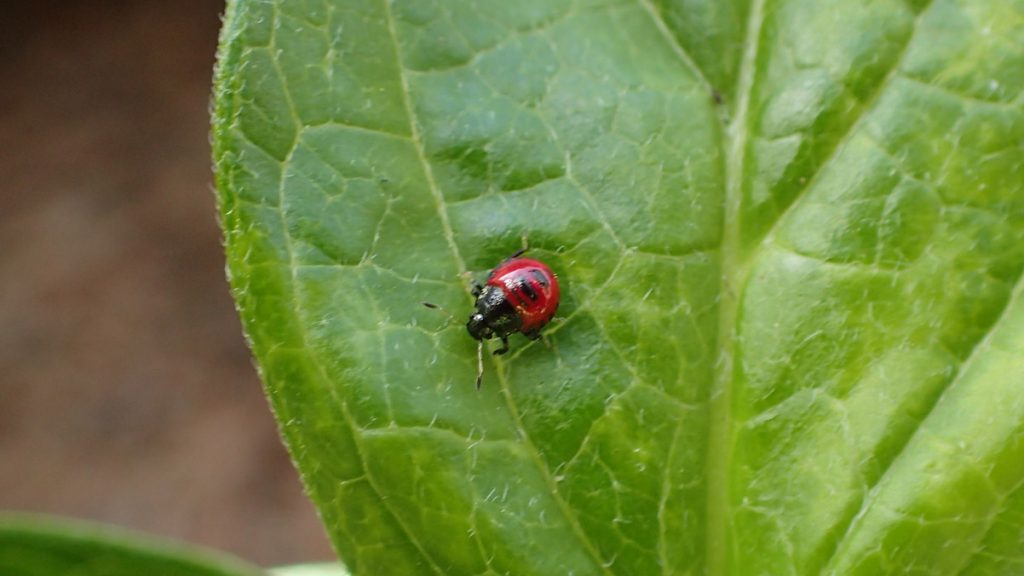
There was a dead monarch caterpillar on my milkweed plant, and I saw this, which I initially thought was a type of ladybug. And ladybugs can kill monarchs. Through the iNaturalist process, I learned that this was a stinkbug, and a young one. Many juvenile stinkbugs look similar, so we never determined the species. And while it is a pest insect, I know it didn’t kill the monarch.
WFSU EcoCitizen is funded by Nature, a production of THIRTEEN PRODUCTIONS LLC for WNET and PBS. American Spring LIVE is a production of Berman Productions, Inc. and THIRTEEN PRODUCTIONS LLC for WNET.
Major support for Nature: American Spring LIVE was provided by the National Science Foundation and Anne Ray Foundation.
Additional financial support was provided by the Arnhold Family in memory of Henry and Clarisse Arnhold, Sue and Edgar Wachenheim III, the Kate W. Cassidy Foundation, the Lillian Goldman Charitable Trust, Kathy Chiao and Ken Hao, the Anderson Family Fund, the Filomen M. D’Agostino Foundation, Rosalind P. Walter, the Halmi Family in memory of Robert Halmi, Sr., Sandra Atlas Bass, Doris R. and Robert J. Thomas, Charles Rosenblum, by the Corporation for Public Broadcasting, and by the nation’s public television stations.
This material is based upon work supported by the National Science Foundation under Grant No. 1811511. Any opinions, findings and conclusions or recommendations expressed in this material are those of the authors and do not necessarily reflect the views of the National Science Foundation.

